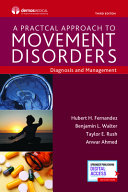

Most ebook files are in PDF format, so you can easily read them using various software such as Foxit Reader or directly on the Google Chrome browser.
Some ebook files are released by publishers in other formats such as .awz, .mobi, .epub, .fb2, etc. You may need to install specific software to read these formats on mobile/PC, such as Calibre.
Please read the tutorial at this link: https://ebookbell.com/faq
We offer FREE conversion to the popular formats you request; however, this may take some time. Therefore, right after payment, please email us, and we will try to provide the service as quickly as possible.
For some exceptional file formats or broken links (if any), please refrain from opening any disputes. Instead, email us first, and we will try to assist within a maximum of 6 hours.
EbookBell Team

0.0
0 reviewsRevised Third Edition of the practical yet authoritative guide to diagnosis and treatment of movement disorders. Written in an expanded outline format, this book is packed with flow charts, algorithms, and tables to provide quick access to point-of-care information. Easy-to-read and thoroughly up-to-date, this new edition includes the latest diagnostic and treatment protocols, recent FDA-approved drugs, and non-pharmacological therapies. With coverage of all major disease categories, this essential handbook belongs in the pocket of any clinician who suspects a movement disorder in a patient.
The book is organized by medical, behavioral, surgical, and non-pharmacological treatment approaches to movement disorders. Opening chapters walk the practitioner through clinical presentation, diagnosis, and work-up of common and uncommon disorders, sleep-related movement disorders, eye and vestibular function, including pediatric issues. Behavioral and psychiatric complications for Parkinson disease, Huntington disease, and Tourette syndrome follow, with a fully reconfigured chapter on functional movement disorders, incorporating changes in classification and treatment approach. Expanded chapters on surgical devices and indications address deep brain stimulation surgery; lesioning, shunts, and pumps; post-operative care. The final section on non-pharmacological approaches covers physical and occupational therapy, speech and swallowing therapy, nutrition, and palliative care.
Key Features:
✓ Thoroughly revised and updated third edition of popular practical resource for busy clinicians
✓ Incorporates most recent evidence for the pharmacological, behavioral, surgical, and non-pharmacological treatment of the full spectrum of movement disorders
✓ Expanded bullet-point outline format for quick access to essential information
✓ Loaded with illustrative flow charts, algorithms, and tables outlining drug dosing, side effects